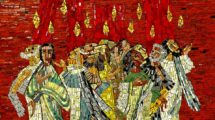
In the vast and intricate world of martial arts, few concepts are as intriguing and controversial as the idea of the "Death Touch." Often depicted in popular media and folklore as a mysterious technique that allows a master to incapacitate an opponent with a mere touch, the Death Touch has captured the imagination of many, leading to questions of its reality. Is it a genuine practice rooted in martial arts mastery, a myth propagated through sensationalism, or perhaps a combination of both?
Historical Context
The Death Touch, often referred to in martial arts as "Dim Mak" in Chinese tradition, translates to "death touch" or "drawing death." The concept has its origins steeped in mysticism and folklore. In the annals of Chinese martial arts, Dim Mak is an alleged method of striking vital points on the body to elicit fatal consequences. Some claim that practitioners of Dim Mak can induce immediate death through pressure points, while others argue that its effects may be delayed, resulting in fatal consequences long after the initial strike.
Martial arts techniques targeting specific points on the body have been documented for centuries. Traditional Chinese medicine emphasizes the significance of meridians and acupoints, which are thought to correlate with various physical and emotional ailments. Mastery over these pressure points is theorized to provide martial artists with an edge in combat, leading to the mythos surrounding the Death Touch.
The Science Behind It
While practitioners advocate for the Death Touch’s effectiveness, the scientific scrutiny of such claims has led to skepticism. The human body is indeed composed of vulnerable areas—like the throat, solar plexus, and temples—where a well-placed strike can cause serious harm or even death. However, the notion that a light touch could lead to instantaneous mortality raises questions about physiology and biomechanics.
Modern medical science supports the idea that trauma to vital points can be dangerous, but the quantifiable effects of strikes to these areas typically require significant force. The instantaneous incapacitation suggested by the term "Death Touch" lacks substantial empirical evidence. Furthermore, the human body has remarkable resilience and recovery capabilities, making the idea of a single touch-induced fatality increasingly dubious.
The Psychology of Belief
One fascinating aspect of the Death Touch phenomenon is its psychological impact. The allure of a mystical, seemingly effortless skill taps into human fascination with power and mastery. Many martial artists strive to attain a level of knowledge and ability that transcends conventional limits. The narrative surrounding the Death Touch serves both as a powerful marketing tool for some schools of martial arts and as a means of psychological motivation for practitioners.
Moreover, the notion of the Death Touch often invokes the idea of tremendous inner strength and focus. In a world where efficiency and effectiveness in self-defense are paramount, the idea of a single touch being capable of ending a confrontation symbolizes the zenith of martial arts mastery. Whether real or exaggerated, such beliefs can foster a deep commitment to training and personal development among martial artists.
The Modern Interpretation
In contemporary martial arts, references to the Death Touch appear more frequently in pop culture, including movies, comics, and literature. Archetypal figures like the mysterious kung fu master or the dark anti-hero practicing ancient techniques personify the enigma of the Death Touch, often introducing it as an ancient art lost to time.
Training in martial arts today focuses far more on practical self-defense and effective techniques rather than esoteric powers. Nevertheless, some modern schools may incorporate elements of traditional teachings that reflect the principles underpinning concepts like Dim Mak without propagating the myth of the Death Touch.
Conclusion
In unpacking the secrets of the Death Touch, it becomes clear that what lies behind this mystical phenomenon is a complex interplay of history, culture, psychology, and physical reality. While the immediate lethal threat of the Death Touch remains largely a myth, it serves as an emblem of the ultimate aspirations in martial arts: mastery, discipline, and the profound understanding of oneself and the human body.
Whether viewed through a lens of skepticism or fascination, the Death Touch encapsulates the enduring mysteries and allure of martial arts, inviting both practitioners and curious minds alike to delve into its depths and challenge the boundaries of belief and reality. In the end, the Death Touch may not be a definitive technique but rather a potent symbol of the quest for knowledge and excellence in the martial arts realm.
































Add Comment